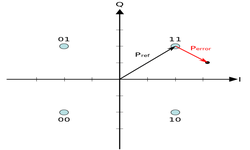Approaches of Applying Deep Learning in Physical Layer
INTRODUCTION
Modern communication systems have performance requirements such as large data volumes, high transmission rates, and fast response speeds, which pose challenges to existing communication technologies. Especially in the processing and data mining of massive data, the existing theoretical framework has fundamental limitations. Therefore, many researchers have turned their attention to deep learning technology, and deep learning-based Physical layer of communication technologies have shown great potential in end-to-end communication systems, channel estimation, signal detection, modulation identification.
General communication System Framework
A general communication system framework is shown in the following figure. It consists of three basic parts:
- Transmitter
- Channel
- Receiver
Communication System as Pair:
Starting from the source, the modules in the communication system appear in pairs e.g.
- Source encoder and source decoder,
- Channel encoder and signal decoder,
- Modulator and demodulator.

In order to optimize the performance of this modular design of the communication system, the general approach of researchers is to design a corresponding performance optimization algorithm for each module, but this method does not guarantee that the performance of the entire communication system is optimal. Therefore, the end-to-end communication system optimization scheme has become key requirement of the modern Communication System.
Deep Learning in Physical layer of Wireless Communication:
Deep neural networks have been pushing recent performance boundaries for a variety of machine learning tasks in fields such as computer vision, natural language processing, and speaker recognition. Recently researchers in the wireless communications field have started to apply deep neural networks in physical layer of wireless communication with success. It has been shown that relatively simple convolutional neural networks outperform traditional algorithms.
Most signal processing algorithms in communications have solid foundations in statistics and information theory and are often provably optimal for tractable mathematically models. These are generally linear, stationary, and have Gaussian statistics. A practical system, however, has many imperfections and non-linearities (e.g., non-linear power amplifiers (PAs), finite resolution quantization) that can only be approximately captured by such models. For this reason, a DL-based communications system (or processing block) that does not require a mathematically tractable model and that can be optimized for a specific hardware configuration and channel might be able to better optimize for such imperfections.
Deep learning can provide a powerful solution for this end to-end application demand. In addition, deep learning can effectively improve the utilization efficiency of massive data in communication systems through automated feature extraction.
Approaches of applying Deep Learning in Wireless Communication:
There are typically two approaches to integrate deep learning with communications:
- Holistic approach: This approach treats communication as an end-to-end process
- Phase Oriented Approach: This approach investigates the application of DL in certain phase of communication process.
Holistic approach:
In the Holistic approach it has been considered that the Message is encoded by transmitter and then decoded by receiver during communication, which is essentially equivalent to the autoencoder DL model. The holistic approach represents an end-to-end communications system as an autoencoder, which is designed with an coupling encoding and decoding module composed of convolutional layers and fully connected layers to extract signal features, and additional regularizing layers are also integrated to modeling the channel effects, such as noise, dropout, channel delay, frequency and phrase offset, and etc.

Then the network parameters will be optimized via stochastic gradient descent algorithm without much expert knowledge in the field of communications. Initial simulation results shows that the learned communications system outperforms some practical baselines without more expert knowledge for hyperparameter tuning.
This holistic approach shows us a brand-new way to optimize our communication systems than the traditional communication practices, but more investigations should be done before practical application such as training on arbitrary unknown channels.
Phase-Oriented Approach:
Phase-oriented approach investigates the application of DL in certain phase or aspect of communication process. Such as channel modeling, equalization, decoding, compression, demodulation, and modulation recognition, etc. These investigations provide us a theoretical alternative to achieve performance bounds than traditional communication theory. There are numerous applications where deep learning can be used but for quick reference highlighting some of the areas out of many possible areas.
Channel Estimation
Traditional channel estimation first estimates the channel state information (CSI) explicitly and then recover the transmitted information from the estimated CSI. Deep Learning based approach formulate channel estimation as a signal recovery problem. Message transmission over channel could be defined as a nonlinear transformation of input data related to noise, spatial response, time response and frequency response along the transmitter/receiver antenna space.
Signal Detection
Signal detection is a task that detects the presence of signals in a specific bandwidth. Because the frequency information of the carrier signal is unknown, and signals of different modulation types usually appear in a certain frequency band and are transmitted at the same time, this poses a challenge for signal detection in a communication system with unstable noise environments. Deep Learning based Model has been designed to solve this problem efficiently.
Modulation Recognition
Modulation recognition is also called modulation classification. It refers to identifying the modulation mode of a signal after receiving the signal. Its essence is a type of pattern classification problem. The main differences between traditional modulation recognition methods and deep learning-based method is that the core of the traditional method is how to extract the features that can characterize the type of signal modulation and build the corresponding classifier. However deep learning-based method pays more attention to the automatic extraction of features using deep neural networks, especially in end-to-end systems.
The initial results show that holistic approach of using Deep learning in communication systems shows outstanding performance compared to traditional communication theory and technology. At the same time, we must also clearly understand that the existing research is still in the initial exploration stage, and the use of deep learning to solve problems in holistic communication systems is a long and challenging road. However, based on the successful application in phase-oriented approach it looks that deep learning-based communication technology will start integrating with the traditional communication technology in a phased manner and we will see the mix of Deep learning and traditional computation in the near future.
In order to meet the new requirements in future wireless communication scenarios, we will try to do in depth studies of the key technologies in the communication system and its process. Will also try to summarize the application of deep learning technology in communication systems along with relevant references for further study of deep learning technologies in communication systems.
Article Submitted By: Chitwan Arora

Chitwan is System Design Engineer with specialization in Layer 1 Development for 5G NR, LTE-A and NB-IOT. He hold master degree in Electric, Electronics and Communication Engineering from IIT Roorkee. You may reach out him at LinkedIn: https://www.linkedin.com/in/chitwan-arora-07445a4/
References:
- Feifan Liao et al 2020 J. Phys.: Conf. Ser. 1617 012024 “Deep Learning Methods in Communication Systems: A Review”
- Tim O’Shea, Senior Member, IEEE, and Jakob Hoydis, Member, IEEE “An Introduction to Deep Learning for the Physical Layer”
- A. Abdelmutalab, K. Assaleh, M. El-Tarhuni, Automatic modulation classification based on high order cumulants and hierarchical polynomial classifiers, Physical Communication 21 (2016)
- X. Zha, H. Peng, X. Qin, G. Li, S. Yang, A deep learning framework for signal detection and modulation classification, Sensors 19 (18) (2019) 4042.
Related Posts
- Smart Antennas and Beamforming, Understanding with GNU : Part 1
- Smart Antennas and Beamforming, Understanding with GNU : Part 2
- Smart Antennas and Beamforming, Understanding with GNU : Part 3
- What is Active Antenna System (AAS)and its 3D aspects, Why AAS for 5G?
- 5G NR Antenna Port – Logical and Physical Antenna Mapping
- Motivation Behind Having Multiple Numerology in 5G NR



